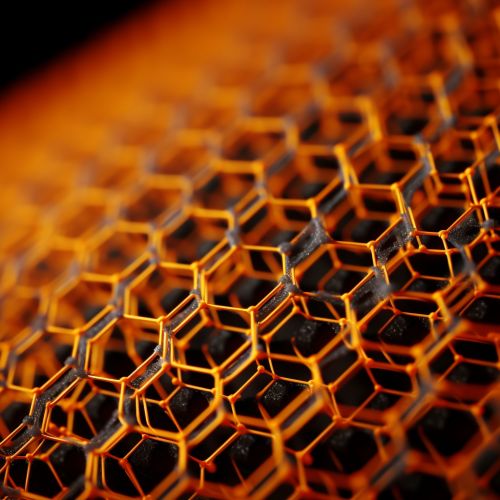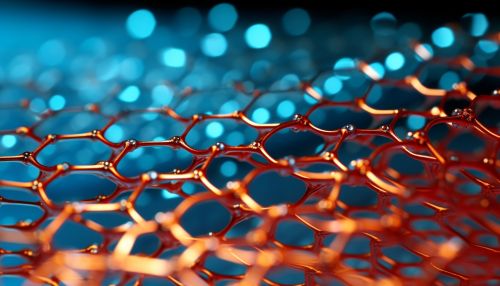Self-Assembled Monolayers
Introduction
Self-assembled monolayers (SAMs) are organic coatings that form spontaneously on the surfaces of certain substrates. These monolayers are composed of molecular building blocks that organize themselves into a highly ordered structure. The process of self-assembly is driven by the interactions between the substrate and the organic molecules, as well as the interactions between the molecules themselves. SAMs have been extensively studied due to their potential applications in a wide variety of fields, including electronics, nanotechnology, and biomedical engineering.


Structure and Formation
The structure of a SAM is largely determined by the nature of the organic molecules that make up the monolayer. These molecules typically consist of a head group, a spacer region, and a tail group. The head group forms a strong bond with the substrate, anchoring the molecule in place. The spacer region consists of a chain of atoms that determines the overall length and flexibility of the molecule. The tail group interacts with the surrounding environment and can be chemically modified to impart specific properties to the SAM.
The formation of a SAM begins with the adsorption of the organic molecules onto the substrate. This process is typically carried out in a solution, where the molecules are free to move and orient themselves with respect to the substrate. The molecules then spontaneously organize into a monolayer, driven by the minimization of the system's total energy. This self-assembly process is highly efficient and can result in monolayers that are nearly perfect in their order and uniformity.
Properties
One of the key properties of SAMs is their ability to modify the surface properties of the substrate. By choosing appropriate organic molecules, it is possible to tailor the surface chemistry, wettability, and other properties of the substrate. For example, SAMs can be used to create hydrophobic surfaces, to prevent protein adsorption, or to promote cell adhesion.
Another important property of SAMs is their stability. Once formed, these monolayers are highly resistant to desorption, making them suitable for long-term applications. However, the stability of a SAM can be influenced by a number of factors, including the nature of the substrate, the structure of the organic molecules, and the conditions under which the SAM is formed and stored.
Applications
Due to their versatility and ease of preparation, SAMs have found a wide range of applications. In the field of electronics, for example, SAMs can be used to modify the electrical properties of semiconductor devices. In nanotechnology, SAMs can serve as templates for the fabrication of nanostructures. In biomedical engineering, SAMs can be used to control the interactions between biological systems and synthetic materials.
Challenges and Future Directions
Despite the many advantages of SAMs, there are also several challenges that need to be addressed. One of the main challenges is the control over the structure and composition of the SAM. While the self-assembly process is highly efficient, it is not always possible to achieve a perfect monolayer. Defects in the monolayer can lead to variations in the properties of the SAM, which can be a problem for certain applications.
Another challenge is the stability of the SAM. While SAMs are generally stable under normal conditions, they can degrade over time or under harsh conditions. This can limit the long-term performance of the SAM and its suitability for certain applications.
Despite these challenges, the field of SAMs is still a very active area of research. Future directions include the development of new organic molecules for SAM formation, the exploration of new substrates, and the design of SAMs with novel properties. With continued research and development, SAMs are expected to play an increasingly important role in various fields.
